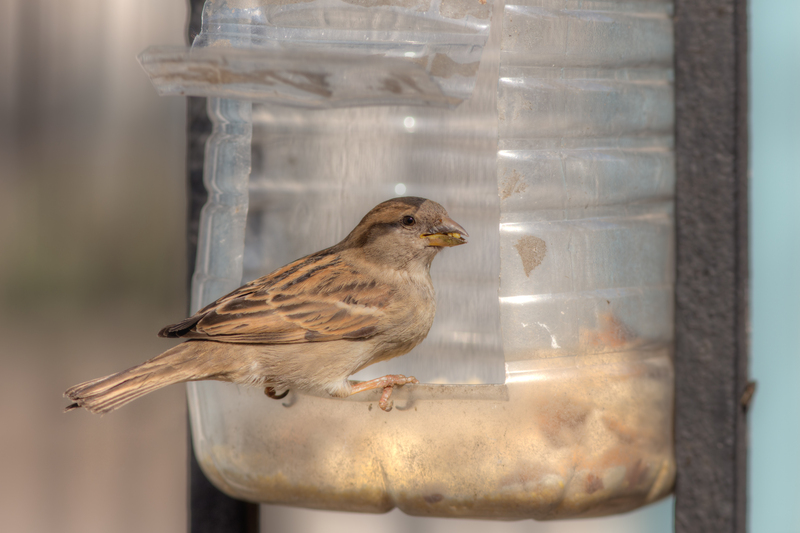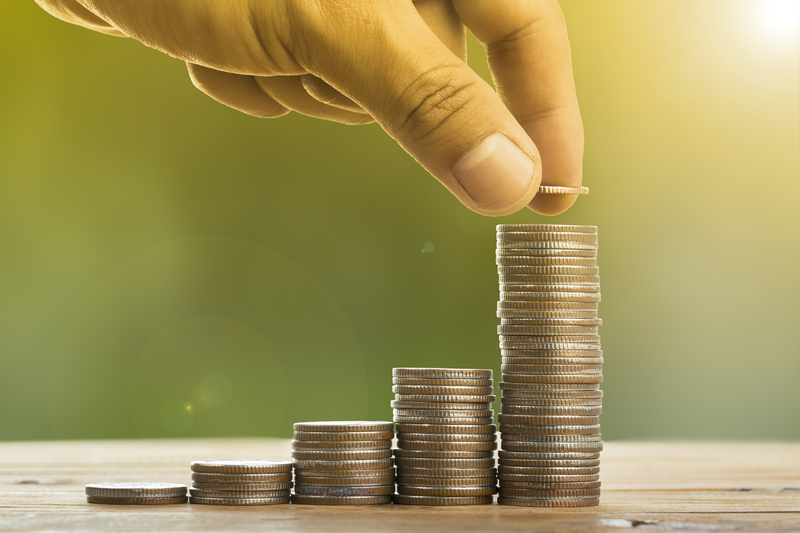Imaginative Upcycling Concepts That Redefine What We Call Trash
What do you see when you look at "trash"? Is it just worthless waste, or could it become the beginning of something extraordinary? In the world of imaginative upcycling, discarded materials get a second chance to shine, transforming into functional art, practical home solutions, or fashionable attire. In this article, we dive deep into the world of upcycling, exploring inventive concepts that push the boundaries of creativity, sustainability, and resourcefulness. Read on for fresh inspiration--and perhaps a new outlook on what's really trash and what might be your next masterpiece.
Understanding Upcycling: More Than Just Recycling
While both upcycling and recycling aim to reduce waste, they do so in fundamentally different ways. Recycling typically breaks down materials to their base elements for repurposing--plastic bottles become new plastic, for example. Upcycling, by contrast, takes existing items or materials and creatively reimagines their function or form. Instead of returning to raw materials, upcycling elevates "trash" into something new and often more valuable.
- Recycling: Breaks items down into raw materials.
- Upcycling: Repurposes objects without significant breakdown.
This shift in mindset from disposable to transformable is a crucial step in the fight against pollution, landfill overflow, and wasteful production cycles. Let's explore imaginative upcycling concepts that are revolutionizing the way we see and use discarded materials.

Creative Upcycling Ideas That Turn Trash Into Treasure
1. Furniture Resurrection: From Pallets to Home Accents
One of the most popular upcycling trends revolves around wooden pallets and crates. Pallet upcycling is accessible, affordable, and limited only by your imagination. Here are a few inspirational ideas:
- Coffee Tables: Stack, paint, and add wheels to pallets for a rustic-chic centerpiece.
- Vertical Gardens: Hang repurposed pallets on your wall and plant herbs or flowers in the slots.
- Bookcases: Stand pallets upright and nail on shelves for a functional, striking bookshelf.
Each of these projects not only keeps wood out of the landfill but also offers a unique focal point for any home or office.
2. Artistic Expression: Sculptures and Wall Art from Waste
In the hands of an artist, even the most unassuming debris can become breathtaking. Upcycled artwork often incorporates items such as:
- Scrap metal
- Plastic bottles and caps
- Discarded electronics
- Bottle tops and corks
- Old magazines and newspapers
This type of eco-art not only showcases sustainable values but provides a commentary on consumer culture and the forgotten potential in everyday objects. For instance, plastic-bottle installations are now increasingly seen at public exhibitions, while e-waste sculptures remind viewers of the mounting issue of electronic trash.
3. Upcycled Fashion: Clothing and Accessories from Discarded Textiles
Fashion is one of the most waste-producing industries, but imaginative upcycling concepts are changing the way we view "old" garments and fabrics. Here's how:
- Patchwork Clothes: Combine scraps to create vibrant jackets or bags.
- Denim Reinvention: Turn worn-out jeans into trendy tote bags or aprons.
- Vintage Dress Restyling: Add embroidery, dye, or cut out sections for a fresh look.
Not only does upcycled fashion reduce waste, but each piece carries its own unique story--no two items are exactly the same!
Household Innovations: Upcycling for Everyday Use
4. Lighting Up the Room: Lamps and Chandeliers
Ever thought of turning glass bottles, tin cans, or even old kitchenware into show-stopping lighting? Imaginative upcyclers have come up with countless ways to give trash new life:
- Wine bottle lamps: Cut and wire for moody tabletop lighting.
- Mason jar chandeliers: Hang multiple jars on an old frame for rustic elegance.
- Colander pendants: Repurpose kitchen colanders as quirky, industrial-style lampshades.
Creative upcycling not only saves money but also adds character and conversation starters to your living space.
5. Garden Wonders: Planters, Paths, and Outdoor Art
Gardens are the perfect backdrop for upcycled creations. With just a bit of imagination, would-be trash turns into functional decor:
- Tire planters: Paint discarded tires and stack them for vibrant flower beds.
- Plastic bottle irrigation: Pierce bottles with small holes and bury them near plant roots to create DIY drip systems.
- Old boots or shoes: Fill with soil and install as whimsically unique planters.
- CD mosaics: Smash obsolete discs and glue the shards to garden walls for a sparkling mosaic effect.
Cutting-Edge Upcycling Concepts From Around The World
6. Modular Housing from Shipping Containers
All over the world, creative architects have begun transforming used shipping containers into unique, affordable housing. These modular homes are:
- Sustainable--using existing resources, not new materials
- Cost-effective, especially where construction materials are expensive
- Architecturally striking and customizable, both inside and out.
This groundbreaking upcycling trend is helping to address urban housing shortages while also reducing the environmental impact of construction waste.
7. Skateparks and Playgrounds from Rubber Tires
Upcycling isn't just for adults--children benefit too! Old vehicle tires are now being refashioned into:
- Safe, bouncy playground flooring
- Creative climbing structures or swings
- Colorful barriers and seating in community parks
Such upcycled tire projects extend the life of otherwise difficult-to-recycle items and provide safe outdoor spaces for communities.
8. Ocean Plastics Turned Into Furniture
Some of the world's most imaginative upcycling concepts now involve marine debris. Designers and companies collect plastics from the ocean and transform them into:
- Durable outdoor furniture (benches, tables, chairs)
- Decking and play structures
- Art installations and educational exhibits
This process not only reuses "trash" but also raises awareness of the growing problem of plastic pollution.
The Benefits of Imaginative Upcycling
Why should we care about redefining trash through imaginative upcycling? The benefits go far beyond aesthetics. Here's how upcycling is transforming our world:
- Environmental impact: Reduces the demand for new resources, cuts landfill use, and decreases pollution.
- Economic advantages: Provides low-cost materials for projects and creates new business opportunities in the green economy.
- Educational value: Inspires creativity and resourcefulness in schools, communities, and families.
- Personal satisfaction: Completing an upcycled project is rewarding and promotes a sense of accomplishment.
Combating the Linear Economy
Traditional manufacturing and consumption follow a linear model: take, make, dispose. Imaginative upcycling is a key component of the circular economy, where resources are kept in use for as long as possible. By embracing this model, we help to create a more resilient, sustainable future.
Making Imaginative Upcycling a Part of Your Life
Start Simple--But Dream Big
If you're new to upcycling, start by reusing items you'd normally throw away:
- Turn glass jars into storage containers.
- Use egg cartons for seedling starters.
- Create art from found objects.
The more you practice, the easier it becomes to see creative potential in everyday items. Share your ideas, collaborate with others, and look for inspiration everywhere.
Support Upcycled Products and Businesses
The market for upcycled goods is growing. By purchasing upcycled furniture, fashion, or art, you help support the innovators and makers behind these movements. Seek out local artisans, online marketplaces, and even workshops where you can learn to transform trash into treasures yourself.
Get Kids Involved
Imaginative upcycling is a fantastic way to teach environmental responsibility and creativity to children. Host family projects, craft days at school, or neighborhood upcycling contests. Kids often come up with the most out-of-the-box ideas--let their creativity shine!

The Future of "Trash": Limitless Imagination
The next time you're about to throw something away, pause. Ask yourself: Could this become more? Upcycling is not just a trend--it's a movement redefining our relationship with waste, resources, and creativity.
Whether you're revamping your home with upcycled furniture, diving into wearable art, or supporting projects that give back to the planet, remember: every innovative choice helps shape a more sustainable, beautiful world. If enough people embrace imaginative upcycling concepts, we truly can change what we define as trash--and transform our future in the process.
Frequently Asked Questions About Upcycling Concepts
What materials are easiest to upcycle for beginners?
- Glass jars and containers
- Cardboard boxes
- Old textiles such as T-shirts or jeans
- Tin cans
- Plastic bottles
How does upcycling help the environment?
By keeping materials out of landfill, reducing raw resource use, and encouraging creative solutions, upcycling lowers greenhouse gas emissions and supports a circular economy.
What are some advanced upcycling projects to try?
- Building furniture from discarded wood or pallets
- Making art installations from e-waste
- Restoring old bicycles or appliances
- Transforming old shipping containers into tiny homes
Where can I learn more about imaginative upcycling?
- Online tutorials and maker communities
- Local workshops and art centers
- Environmental organizations
- Social media pages dedicated to upcycling innovations
Join the movement, and see for yourself how much beauty and utility lies hidden in what we once dismissed as trash. Get creative, and redefine what's possible--one upcycled project at a time!
